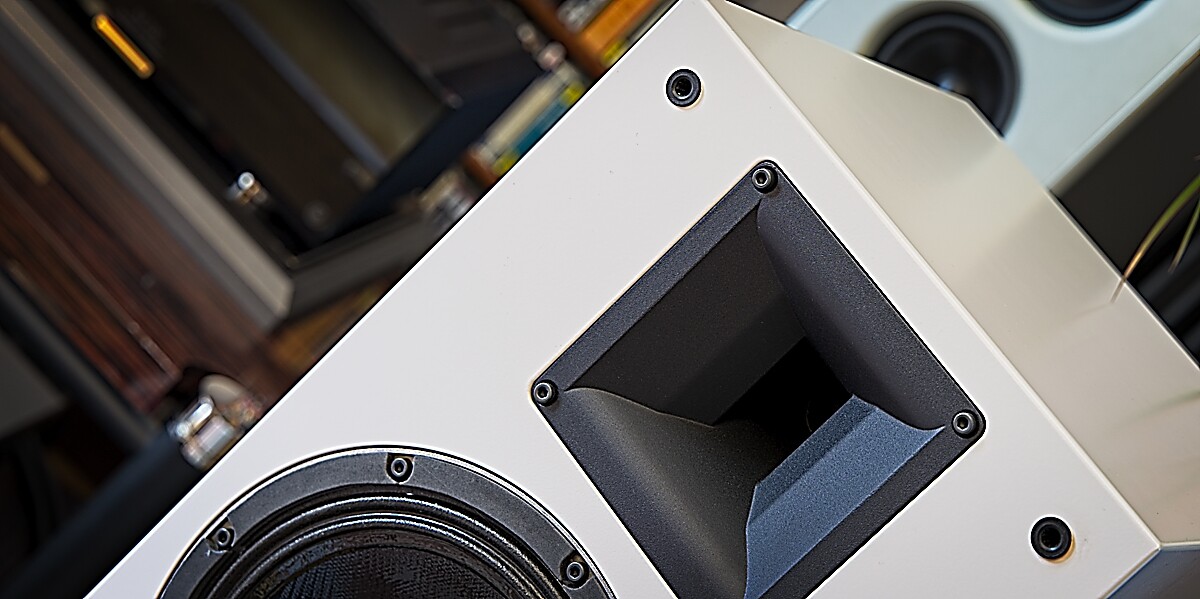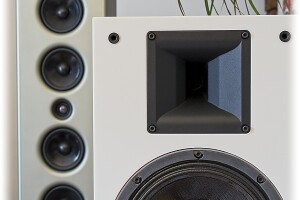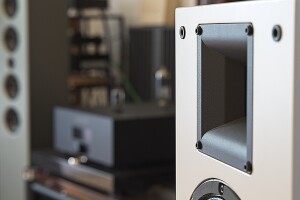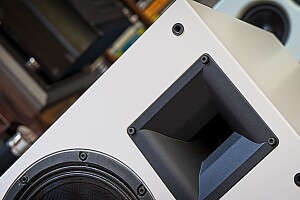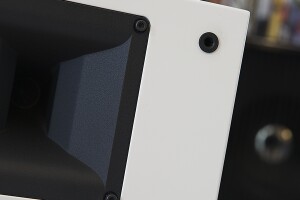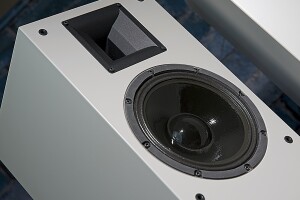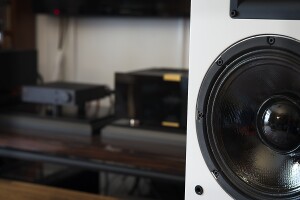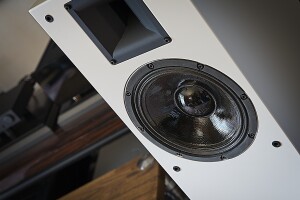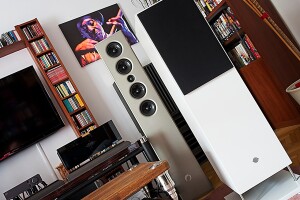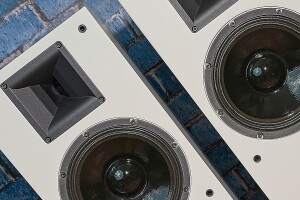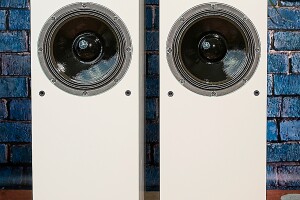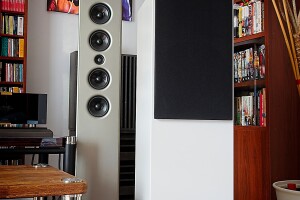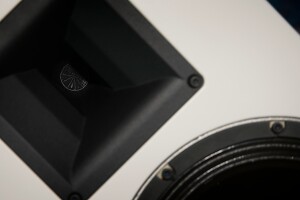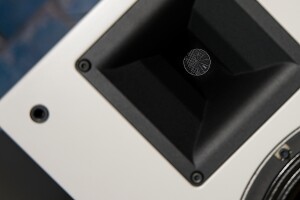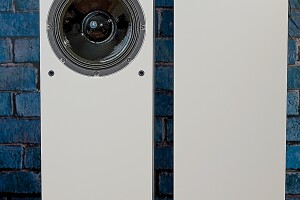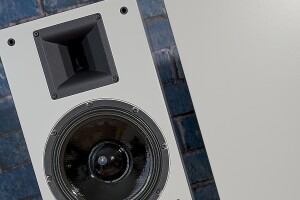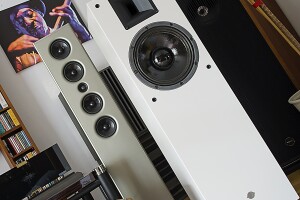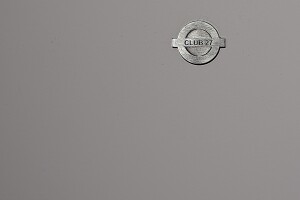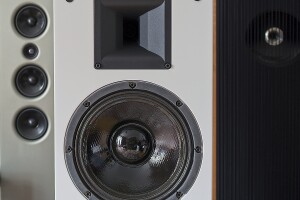Versatile speakers that work equally well with low-power tube amplifiers and solid-state beasts are a rare species. The Dutch Club-27 in cooperation with Robert Bastani specializes in such designs. I’ve had a chance to spend a lot of time with the medium-size floor-standers, Club-27 KURT MKIII, and… Keep reading to find out how good these really are.
Introduction
Let me be honest – before Robert Bastani contacted me several months ago I hadn’t even heard about the Club-27 brand. As you may already know from the Bastanis Imperial review (see HERE) a decade ago I reviewed and later owned for several years Bastanis Audio speakers called Matterhorn. These were quite large and heavy (50 kg a piece) back-loaded horn speakers, in my version featuring not only a 15-inch wideband (!) woofer but also a fantastic dipole tweeter. Long story short, I loved my Matterhorns, as they were very special in more than one way and they served me well even when reviewing the best amplifiers from Kondo, Air Tight, Audio Tekne, and so on. Sure, at some point I moved on to other designs that seemed to be even better suited for my expanding reviewer’s job, but ever since I’ve often missed the sound of Bastanis horns when exploring my music library.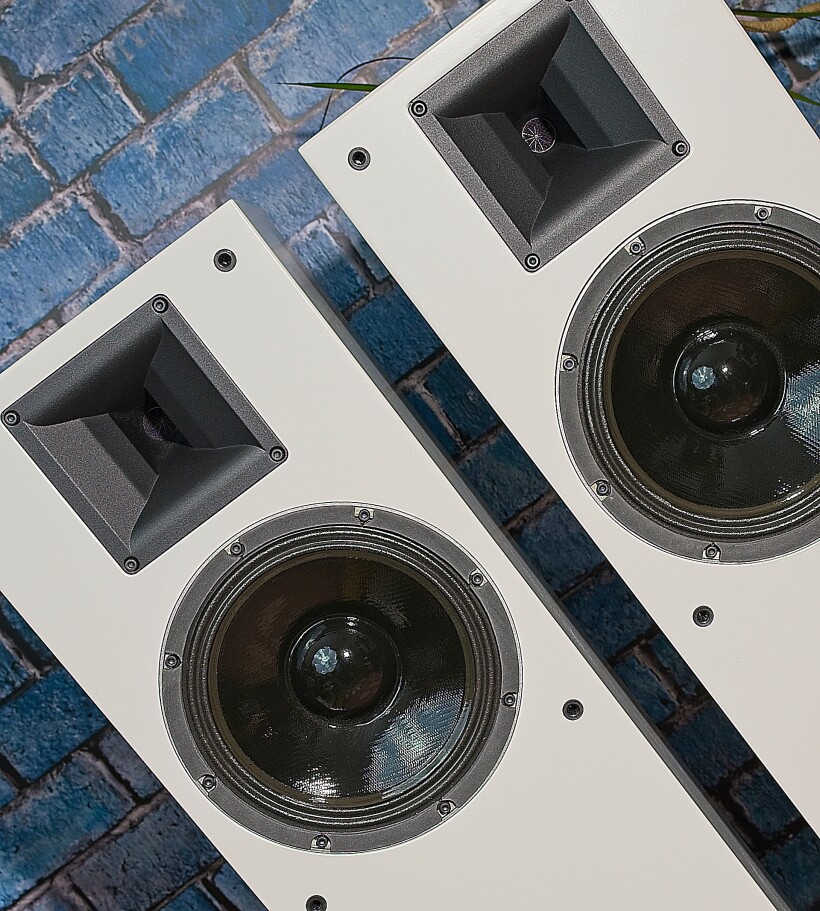
That is why when I received an email from Robert I was eager to find out what he achieved with his top cables and what the other brand, Club-27, cooperation between Robert and Armin Bos, had to offer. Here’s what caught my attention:
„The moderate-priced speakers can be found at Club-27.com, a shared company of my partner Armin Bos and me. There we also are in a process of relaunching and we will present a new line of speakers soon starting with three models, small floor-standing speakers based on crossover-less 13cm wideband drivers with ribbon tweeters. The cabinets are floor-firing bass horns like you know from the Matterhorns. These are very elegant-looking and complete-sounding speakers.
The next model uses 25cm, crossover-less wideband drivers, in the same style bass-horn cabinets with 1“ horn tweeters. These are the „Suisse army knife“ speakers, as they do it all – dynamical sound, 94dB efficiency suited for a wide range of amps from SETs to high output solid-state amps. These speakers offer natural warm sound with lots of bass power and exceptional good resolution, overall similar to the Bastanis Matterhorn MKI speakers without the extreme efficiency and the extreme dynamics.
The last speakers of the relaunched Club-27 line will be the Jimi MKIII open baffle speakers based on crossover-less 12“ wideband drivers and 1“ horn- tweeters and active powered 15“ woofers in sealed cabinets. The efficiency of the wideband drivers is 100dB, the speakers are versatile and due to the easy setup of the actively powered woofers the Jimi MKIII will offer the best sound quality of the Club-27 line of speakers.”
As I’ve already mentioned, I’ve truly missed the sound of Matterhorns so I gladly jumped in at an opportunity to listen to their, say, close cousins. The current Club-27 lineup includes four models plus another three for DIY guys, or ones who want to build their speakers themselves. All models are named after members of the so-called Club-27, meaning prominent musicians who died at 27 (usually due to their lifestyle). For this test, we have chosen the KURT MKIII, the second from the top, because… it was not as big and heavy as the Matterhorns. After all, I am 10 years older yet still living in the same apartment on the fourth floor with no elevator…
First thing first. I didn’t know anything about Club-27 so I had to visit their website to learn about their background. Here is what caught my attention:
Club-27 Audio got started with a small group of music lovers and professional audio designers who like to invent the fantastic “live-like” listening experience known from a few extremely expensive audio chains at affordable prices (emphasis ed.). To open this door for a bigger group is the aim of Club-27, we follow our passion and the spirit of liberation. Robert Bastani, well-known as the designer of the famous Bastanis open baffle and horn speakers is responsible for the design of the Club-27 speakers, this guarantees best possible sound quality becomes available at ordinary prices. How do we do that?
Club-27.com re-invents lost qualities. The Club-27 products are a counterpoint to the uniform mainstream products which dominate the market these days.
Club-27 products open the door to true high-end audio for everybody. For example, all speakers of the line are based on wide-band drivers which are treated by hand to work without any series crossover parts for superior detail and the best transient response.
The Club-27 brand name mirrors the spirit of the famous musicians of the Club27 who all passed away too young. Liberation and passion were the central themes. Their music will stay alive forever. To get in touch and feel the music requires a high-quality stereo. Club-27 products make the music come alive and get you in touch with these legends.
Long story short, the Club-27 speakers, including the KURT MKIII, have a lot in common, more than ‘just’ the designer, with Bastanis speakers. Based on my experience with the latter (the Matterhorns in particular) I was fully justified in expecting something special from them.
Design and features
The KURT model was named to honor no other but Kurt Cobain, the late leader of Nirvana (who, unfortunately, also belongs to the ‘Club-27’). The KURT MKIII is a medium-sized floor-stander. It features two drivers with a woofer working in a back-loaded horn cabinet. Although significantly smaller (yet not small!) than the Matterhorn, the reviewed model looks a lot alike with its regular-shape, rectangular cabinet resting on three metal rods (two in the front and the third in the back) supported by a flat base. There are no adjustable spikes or feet as the rods are there to make sure that the distance from the outlet of the horn to the floor is exactly as the designer intended it to be.
It is very important for this type of design as the floor is supposed to support the reproduction of lower frequencies. During one of the discussions with Robert, he told me, that while KURT MKIII should work perfectly in most rooms it is possible to tune their sound a bit. If there is too much bass it is possible to use some damping material, when there is too little bass one can use 8cm, instead of the standard 10cm, long rods connecting cabinets with bases. It shortens the distance between the horn’s outlet and the floor thus changing the bass performance – there will be a bit more bass but it may come at the cost of its lowest extension.
Ten years ago I remember discussing with Robert placing the Matterhorns on some sort of anti-vibration feet/pads. Back then he suggested (and it proved right) that the only option was to use ones that were very low/flat so that the distance from the floor would have hardly changed. By the way, after some period of experimentation I ended up with the Bastanis speakers placed… directly on the floor – yup, he knew what he was talking about. The same goes for KURT MKIII although, as he says, the latter is more forgiving than the Bastanis speakers.
The KURT MKIII features two drivers. One of them is a 10’’ wideband driver, the other is a specialized tweeter with a phenolic diaphragm. Both are made in Europe and were carefully selected to provide excellent performance but also allowed the manufacturer to keep the price of Club-27 speakers at a more accessible level than that of the more exclusive Bastanis counterpart. One of the key features of this design, as well as of the other ones by Robert Bastani, is using a wideband woofer that, after special treatments is able to reproduce a wide frequency range. Let me quote Robert on that:
„The woofers get various in-house treatments with advanced methods using a process involving different oils and heat depending on the area of the cone and in a similar process, two different lacquers (dampening and de-dampening lacquers depending on the area of the cone) are applied by hand in 14 (!) layers over about 6 weeks (!). It enables the drivers to show bending wave behavior to higher frequencies and to have full control over the cone- resonances.”
There are also no series crossover components in a signal’s path between an amplifier and the woofer. As Robert explained:
“They all have no series crossover parts before the wideband drivers. The drivers get the „correction“ applied with the in-house treatments which enable them to behave fine by themselves. With the treatments the wideband drivers in all models of the line behave in the upper midrange like bending-wave drivers, so they can climb the frequency ladder somewhat higher and avoid any beaming that non-treated drivers would show. We wanted to avoid passive crossover parts as even the best and most expensive parts can not improve the signal quality. In the best-case scenario, the crossover parts do not steal too much energy and the finest information from the signal before it gets led to the driver. The treatments which enable the Club-27 and Bastanis wideband drivers to behave fine without crossover parts are further improved compared to the treatments you remember from the Matterhorn speakers. The newest evolution of these treatments enables the drivers to behave fine without crossover parts and yet there is full control over the resonances which improves the sound quality a lot.”
The designer paired the woofer with a carefully selected tweeter. For the latter, he used a single, high-quality silver-oil capacitor from Mundorf and a resistor in series. The cap is the 6dB crossover mirroring the self-roll-off of the wideband driver in the crossover region and protecting the tweeter from low-frequency signals. The resistor on the other hand attenuates the tweeter to play on the right level with the midrange from the wideband driver.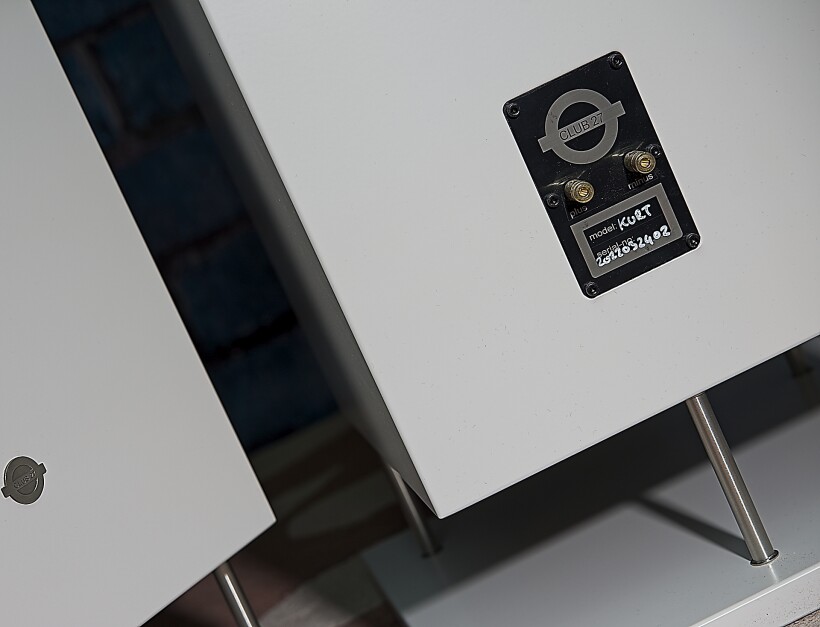
The third component is a paralleled resistor (meaning it is not in the signal’s path!) which flattens the impedance to make the Kurt speakers tubes-friendly, but it also flattens the frequency curve of the tested speakers in the upper midrange. Last but not least, it is important for achieving the right parameters to make the wideband driver work perfectly with the floor-firing horn cabinets. As Robert says, there is just a single resistor, outside the signal’s path, but it has to fulfill highly complex tasks. The tweeter itself sits in a small horn that is also made in Europe from high-quality aluminum (not plastic!). Its rectangular shape was selected to achieve desired dispersion pattern.
At the back of the cabinets, you will find single, gold-plated speaker posts accepting banana plugs, spades, or bare wires. Unlike Matterhorn, the KURT MKIII are delivered with elegant, black grills. Generally speaking, despite some similarities, the Club-27 speakers are more, so to speak, ‘interior-friendly’, simply because of their smaller footprint and grills that are included in the set (useful even if they should be removed for critical listening sessions). I bet this model will be an easier-to-accept addition to any room, especially if it is a living room. As for finishes, as Robert told me, customers can choose any color from the RAL pallet and the matte finish is included in the price. Those who prefer a high gloss finish or thick veneers can order custom versions at an additional cost.
One more thing. As the speakers, I received for the review were brand new I got a few instructions regarding the best way to make sure they would be able to deliver their optimal performance after a proper break-in process. As Robert specified in his email:
1) The suspensions of the wideband drivers need to soften up to work like expected with the bass-horn cabinets. It is best to use onlinetonegenerator.com and choose a sine wave of 10Hz or lower (no noise) and play it on repeat for a couple of days. Please keep an eye on the cone movement. In the beginning, it should not be over 1cm (+/-5mm) because when the suspension softens the amplitude of the movement will increase a lot. Please check after the first hours. The cones can move about 3cm without any issues, so no need to be scared about that but if the movement further increases the voice-coil-formers may touch the pole plates of the magnets and get damaged.
2) The cones of the drivers need a longish burn-in because the wideband drivers work as bending wave- drivers to higher frequencies and so the cones themselves (not the suspension only) also need some softening. There are no special requirements for this part of the process, it is fine to play music at any level you like but please forget the first two days.
The Kurt speakers offer high efficiency of true 94 dB/1W/1m which let them be more sensitive than most other speakers with a manufacturer-specified efficiency of 96dB. The Kurt speakers can be powered by any solid state or tubed amp and will clearly show if the amp and the rest of the stereo-chain sound good and in harmony. The easy load for any amp and the high physical self-damping of the drivers in the bass-horn cabinets enable the Kurt to be powered even by low-power SE tube amps. These kinds of amps live up to powering the Kurt speakers because they are free from the need for lots of electrical damping, besides the efficiency is a big point if anybody uses lower-wattage SE tubed amps.
I followed instructions to the letter letting KURT MKIII slowly break in first with the 7Hz tone and later with some music of various genres, both played for several days in a loop (with some rest periods in between). After that I moved them to my main system – it was time to start my evaluation.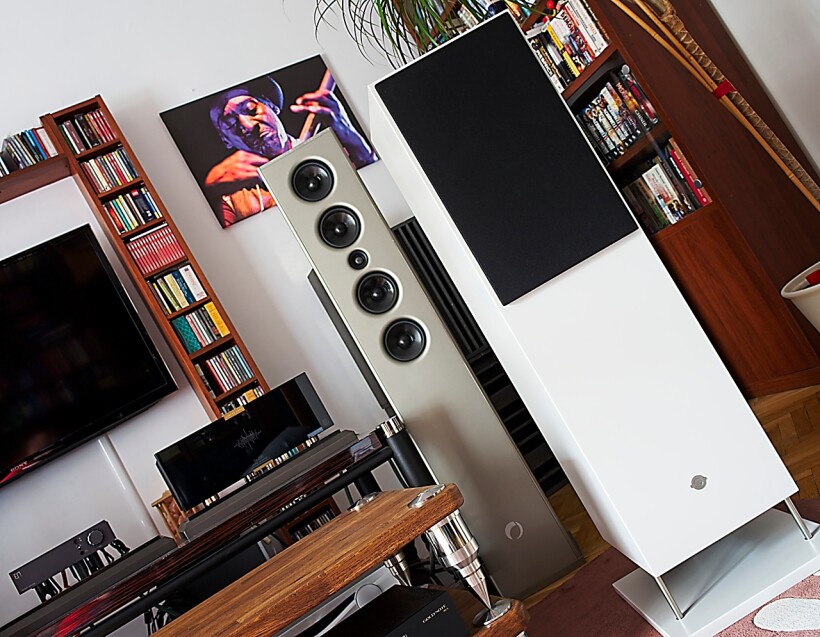
Sound
I listened to KURT MKIII in my reference system using my J.Sikora turntable (with their own KV12 tonearm and Air Tight PC-3 cartridge) and LampizatOr Pacific DAC as main sources. For the purpose of this test the speakers were driven most of the time by two amplifiers interchangeably – my solid-state Class A GrandiNote Shinai (2x37W) and the excellent 300B SET, Allnic Audio T-1500 MKII. At some point I hooked them up also to the powerful solid-state AB Class Accuphase P-7500 and hybrid Kora TB200 integrated, my own modified ArtAudio Symphony II (300B SET), and finally to the tiny, yet wonderful Enleum Amp-23R. I compared the tested speakers mainly to both of my reference models – Ubiq Audio Model One Duelund Edition (3-way, closed cabinet design) and GrandiNote MACH4 (high-sensitivity, no-crossover design in vented cabinet). Both models cost circa twice as much as the Club-27’s.
Even before the KURT MKIII fully broke in Robert asked me for my first impressions. He wasn’t surprised when I told him that the reviewed pair reminded me of Matterhorns. I don’t remember the latter that clearly, after all, I parted my ways with them probably some 5-6 years ago, but they did leave an impression that has lasted to this day. After all, both models are similar (to a point) in terms of some key design choices. As with the Bastanis speakers, and also with the Club-27 there was this incredible effortlessness to the sound reproduction and high dynamics (maybe not quite as high as with Matterhorns, but still). No matter the music genre, the flow of music was smooth and addictive, the sound was (I would even say: surprisingly) resolving, transparent, and rich with details and subtleties, yet presented in a very natural, non-invasive, non-aggressive, highly coherent way. It was clear from the start, that this would be one of these cases when it is very easy to get lost in a listening experience, and quite hard to assess the subject of a review and write about it. The latter in such cases simply feels irrelevant, or… a job, and who likes to do a job when the real fun is an option? :). Still, the job had to be done. So let’s get on with it.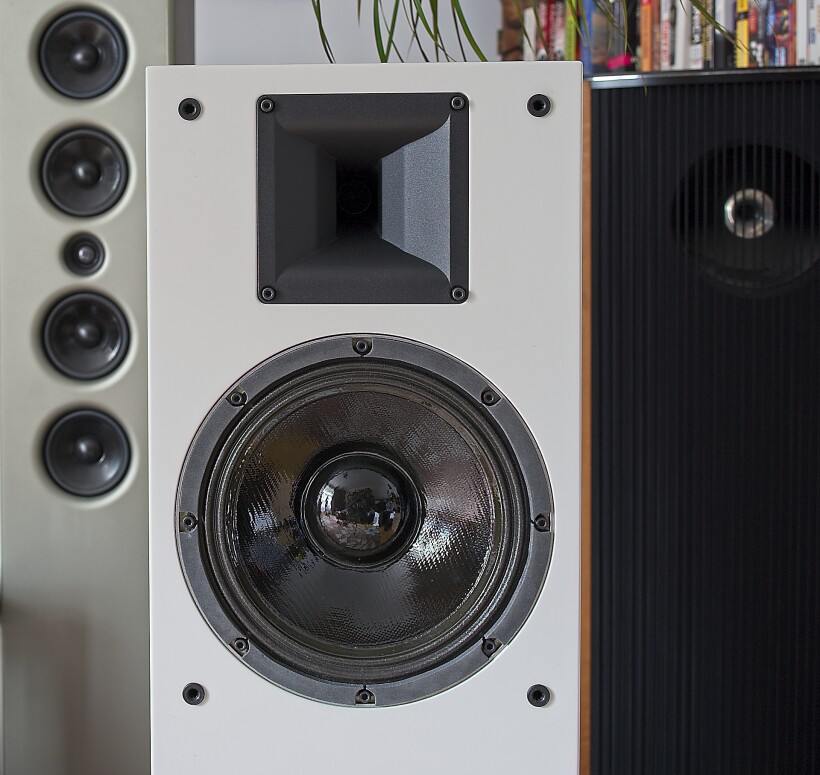
At some early point for a time, I switched to another source on a lease, a vintage Technics reel-to-reel tape recorder. A friend who lent it to me brought along several tapes from his collection. One of them was the latest album by Oleś Brothers & Dominik Strycharski, titled „Koptycus”. Much as my other favorite recording from the Polish brothers, „Spirit of Nadir”, this one was also inspired by the music and traditions from the Middle East region. It is similarly spiritual and mysterious, and probably even better recorded/produced. The KURT MKIII beautifully rendered the unique, highly immersive atmosphere of this album. The drums and bass had proper weight, and the metal percussion elements a proper „ring” to them. Both, the flute and electronic instruments played by Dominik Strycharski contributed to the whole airy experience, again played by the Dutch speakers in a very natural sounding, convincing, and immersive way.
I felt the same listening to the Hadouk Trio’s „Live at Fip”, or Michał Salamon’s „Lion’s gate – Live at the Jassmine Vol. 01” (both fantastic albums, by the way!). The Club-27 speakers seemed to have the same, not that common, quality as Matterhorns, namely an ability to present music with high energy thus bringing the experience closer to one of a live concert than most competitors ever can. The presentation or the transfer of energy from the instrument to the listeners (audience and me) seemed very direct. Music had this wonderful, natural flow to it, and even though, to be perfectly honest, I’d probably never even heard (I mean live) some of these quite exotic instruments recorded on the „Live at Fip”, such as hajouj (an African three-stringed bass) or the doudouk (an Armenian double-reed instrument), yet, to my ear, they sounded absolutely natural and beautiful.
What’s more, the KURT MKIII delivered a particularly open, airy presentation using a lot of acoustic cues from the recordings to render a realistically spacial, in both cases not that big, soundstages. On most live albums, unless recorded in some particularly distant way, Club-27 (same as the Bastanis) speakers placed the listener (me) quite close, yet not too close, to the stage enabling a very close, almost intimate relation, even bonding of sorts with the performers. In that, they reminded me of both, my Ubiq Audio Model One Duelund Edition speakers that love live music, and the Matterhorns. As I guess these two models due to their size and larger woofers did an even better job of feeling the power of music, but the KURT MKIII did an amazing job in this regard as well. Actually, better than most speakers in their price range (both Model One and Matterhorns cost circa twice as much). They also presented all the enthusiastic reactions from the audience, and natural-sounding bravos (both nicely caught on the tape) in a compelling way, which is always a good indicator of a natural-sounding component or actually a whole system. Clapping of hands is one of these seemingly simple yet in reality very difficult elements to present in a truly convincing, natural-sounding way. The Dutch speakers did a great job also in this regard.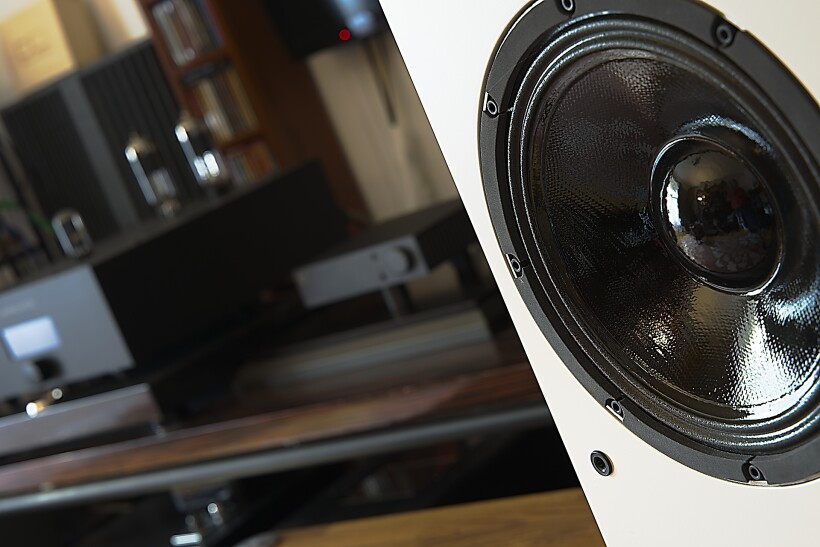
To be honest, for quite a long time I focused on acoustic and often also live performances, as the Kurt MKIII particularly driven by 300B SETs in every single case offered a very, very live-like experience. I loved it so much also because I could push the volume way up without any audible distortion (which also proved, how easy to drive they were, as the 8W per channel from the magical triodes were enough to do just that). Just like on the Alex De Grassi and Keith Greeninger’s „Live at the Phoenix”. That’s one of the ‘must have’ albums for every fan of an acoustic guitar (do I need to even state once more, that I am one?!). These are two incredible solo performances, beautifully recorded with lots of ambiance, lively reactions from the crowd, and so on. The Club-27 speakers presented the musicians (also vocals), their instruments, and the whole acoustic environment in a particularly rich, tangible, present way. They made it so easy to get lost in the flow of music and in the intimate atmosphere of a small venue, and the stories told so beautifully by both artists. When Keith invited the public to sing along with him I couldn’t resist joining in. Yes, the presentation delivered by the Dutch speakers was that much involving, exciting and irresistible!
At some point, I had to move on to check the performance of the Kurt MKIII with other music genres. I started with… another live, but this time a ‘plugged’ performance of Stanley Clarke and his band from the „Live (1976-1977)”. This may not be quite the best or audiophile-grade recording, but it was good enough to let me experience yet again this highly energetic performance of the bass master (and his electric bass guitar as well as his double bass) in a very convincing, lively way. The bass did not extend quite as far down or with as much weight as with, for example, my Ubiq Audio speakers, but it was tight, fast, dense, colorful, and well-differentiated or in other words, served the way I like it :). And it was deep, to be clear, just not as deep as with my 3-way speakers. Yet the dynamics, effortlessness, and tightness of the presentation, all similar to that of Ubiq’s, were as immersive and impressive.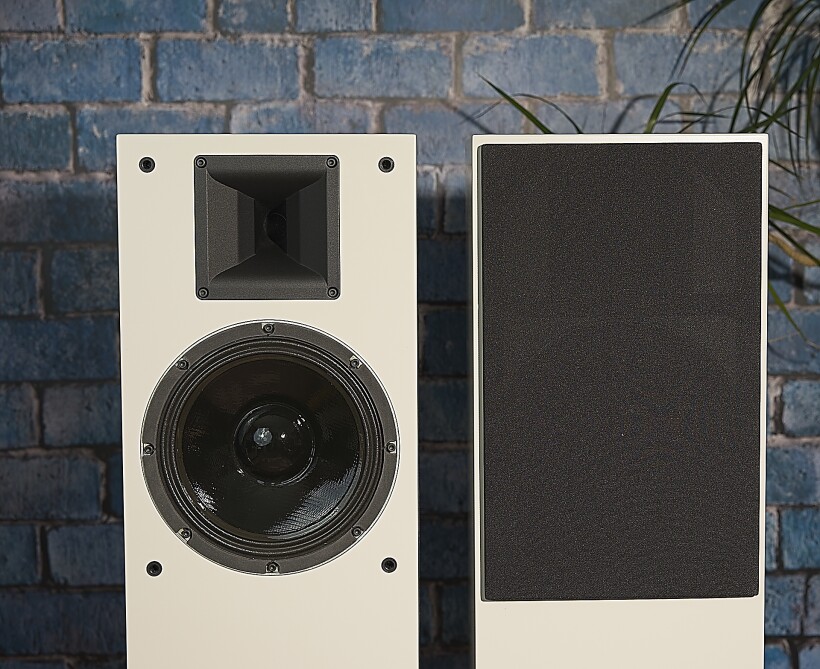
Now, I’ve mentioned, that these were speakers that worked really well with any amplifier I hooked them up with. That is true – they did sound great with powerful solid-states, and with low-power SS amps (Shinai and Enleum), as well as with tube-based ones. But if you were to ask my preference my answer would still be the same as with the Matterhorns – the absolutely best possible match for me (!) were low-power SETs. Mind you, 300B, 2A3, 45, and so on, SET amplifiers are my personal favorites anyway, but they require proper (easy to drive) speakers to present all they got (which is so much!). No matter how hard I try I can’t escape from my personal preferences hence if it were me I would pair the Club-27 KURT MKIII with a 300B SET – both the aforementioned Allnic Audio, or my own ArtAudio (definitely the Air Tights as well, but I am sure that also the 30 W Ayon’s Crossfire SET would be a perfect match) did a fantastic job delivering the most natural, most present, most colorful performance with the reviewed speakers.
But even with my preferences involved I had to admit, that both Enleum and Class A Shinai did (almost) the same wonderful job driving the KURTs. And the same goes for the Accuphase or the fantastic Kora or the Circle Labs M200 (currently under review). The point is that my experience with several various amplifiers proved that the Club-27 KURT MKIII speakers should be great partners for tube, solid-state, and hybrid amps, as long as the latter offer high-quality performance. That’s something that can be said only about very, very few speakers available on the market. It makes the Dutch speakers, same as Bastanis, quite a safe bet for long-term use. No matter what changes happen to your system, these speakers will probably be there to stay for many, many years. And once you get to like them (in many cases it should be the love at first sight, or rather listening session) you’ll keep enjoying their company as they offer an exciting, immersive, maybe even addictive experience.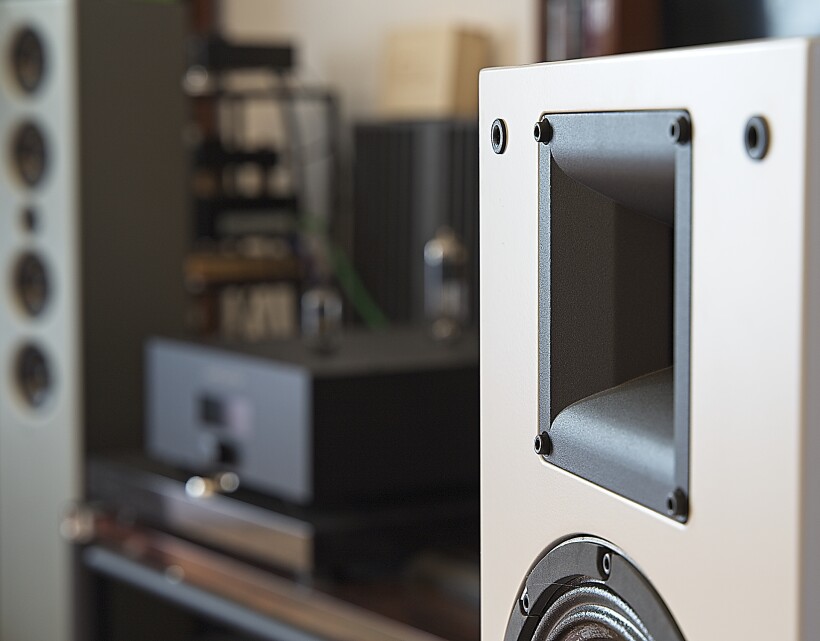
Summary
So what will you get if you decide to purchase a pair of the Club-27 KURT MKIII speakers for your system? Well, these are not only super-versatile partners for almost any amplifier but also fantastic performers. Depending on your choice of amplification the sonic character will differ to a point but you can always count on dynamic, energetic, lively yet smooth, coherent, fluid, and rich presentation. Maybe not quite as dynamic and energetic, with a not quite as big scale of presentation as with Matterhorns, but remember that KURT MKIII offer a smaller footprint, size, and weight (which improves the so-called WAF), and will cost you more or less half of the Bastanis speakers. The resolution is very good, as is the transparency and clarity of the presentation.
Despite their size in a proper system (and all systems include also room’s acoustics) they can disappear leaving you will palpable, realistic, beautifully spatial presentation, rich, resolving, and quite revealing although not really analytical. With them, you will have real fun, as you will experience your favorite music in quite a unique way. What’s more, the Club-27 KURT MKIII sound a lot like single-driver speakers due to their high coherence, yet with a much better band’s extremes and better-balanced sound than any single full-range driver can offer. If you have a chance give them a try! I know I loved them and can recommend them for many various high-end systems. And yes, they made me miss Matterhorns even more…
Technical specifications (according to the manufacturer):
- Drivers: Crossover-less 10’’ wideband drivers and 1’’ horn- tweeters, coupled- in 6dB/oct. with a single cap, bass-horn cabinets
- Sensitivity: 94dB @ 8Ohms
- Recommended power amp: minimum 4W
- Max power handling: 300W
- Dimensions when assembled (H x D x W): 111cm x 26cm x 30cm
- Weight: 45kg per speaker (shipping weight)
Price (when reviewed):
- CLUB-27 KURT MKIII: 7.090,00 EUR
Manufacturer: CLUB-27
Associated equipment:
- Digital source: a custom passive server with WIN10, Roon, Fidelizer Pro 7.10, JCAT NET XE, and JCAT USB XE cards with FERRUM HYPSOS Signature power supply, KECES P8 (mono) linear power supply for the server, JCAT USB Isolator
- D/A Converter: LampizatOr Pacific +Ideon Audio 3R Master Time (USB signal regenerator)
- Analog front end: J.Sikora Standard MAX turntable, J.Sikora KV12 tonearm, AirTight PC-3, phonostages: Grandinote Celio MK IV, ESE Lab Nibiru V 5.
- Power amplifiers: GrandiNote Shinai
- Preamplifier: Audia Flight FLS1
- Loudspeakers: GrandiNote MACH4, Ubiq Audio Model ONE Duelund Edition.
- Interconnects: Bastani Imperial, Hijiri Million, Hijiri HCI-20, TelluriumQ Ultra Black, KBL Sound Zodiac XLR, David Laboga Expression Emerald USB, David Laboga Digital Sound Wave Sapphire Ethernet
- Speaker cables: LessLoss Anchorwave
- Power cables: LessLoss DFPC Signature, Gigawatt LC-3
- Power: Gigawatt PF-2 MK2 and Gigawatt PC-3 SE Evo+; a custom power line with Gigawatt LC-Y in-wall cable; Gigawatt G-044 Schuko and Furutech FT-SWS-D (R)
- Network: Silent Angel Bonn N8 + Silent Angel Forester F1 + optical LAN isolator
- Racks: Base VI, Rogoz Audio 3RP3/BBS
- Anti-vibration accessories: ROGOZ-AUDIO SMO40 and CPPB16 platforms and ROGOZ AUDIO BW40MKII feet, Franc Accessories Ceramic Disc Slim Feet and Wood Block Platform, Graphite Audio CIS-35 and IC-35


